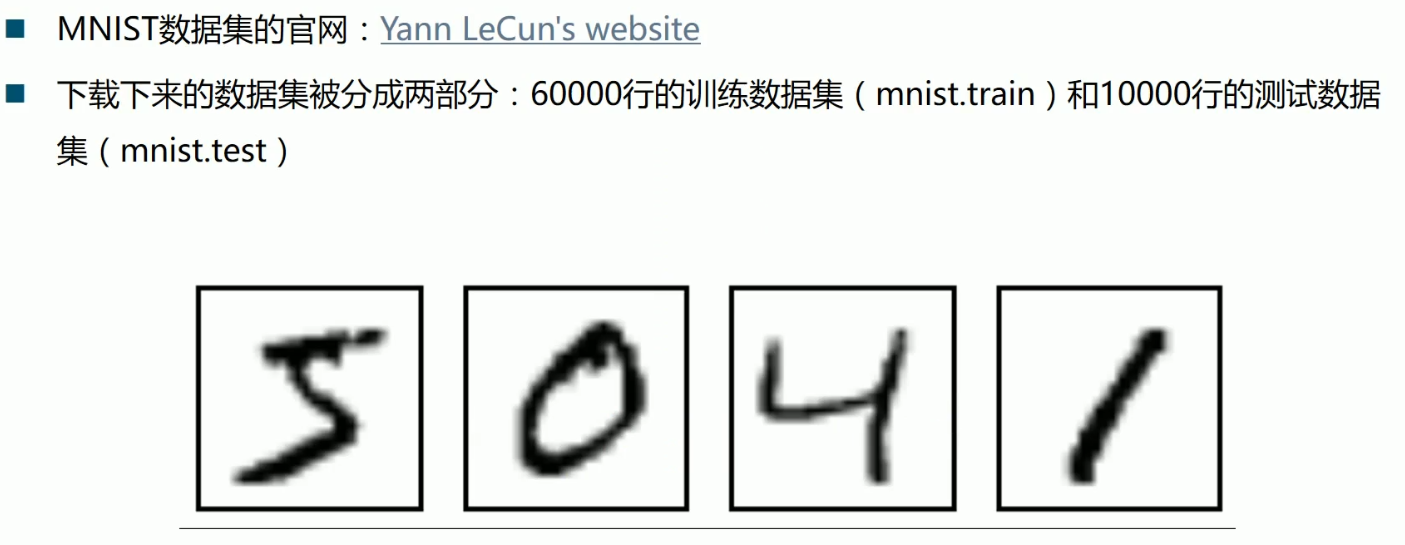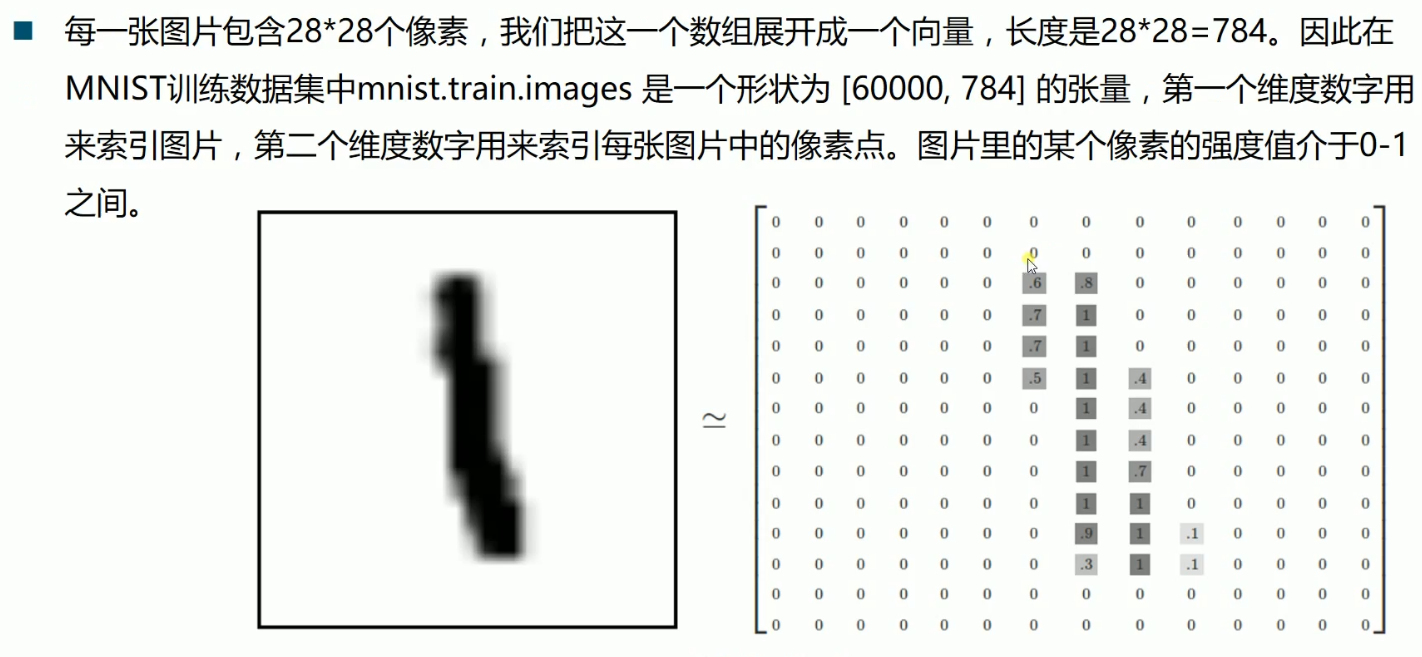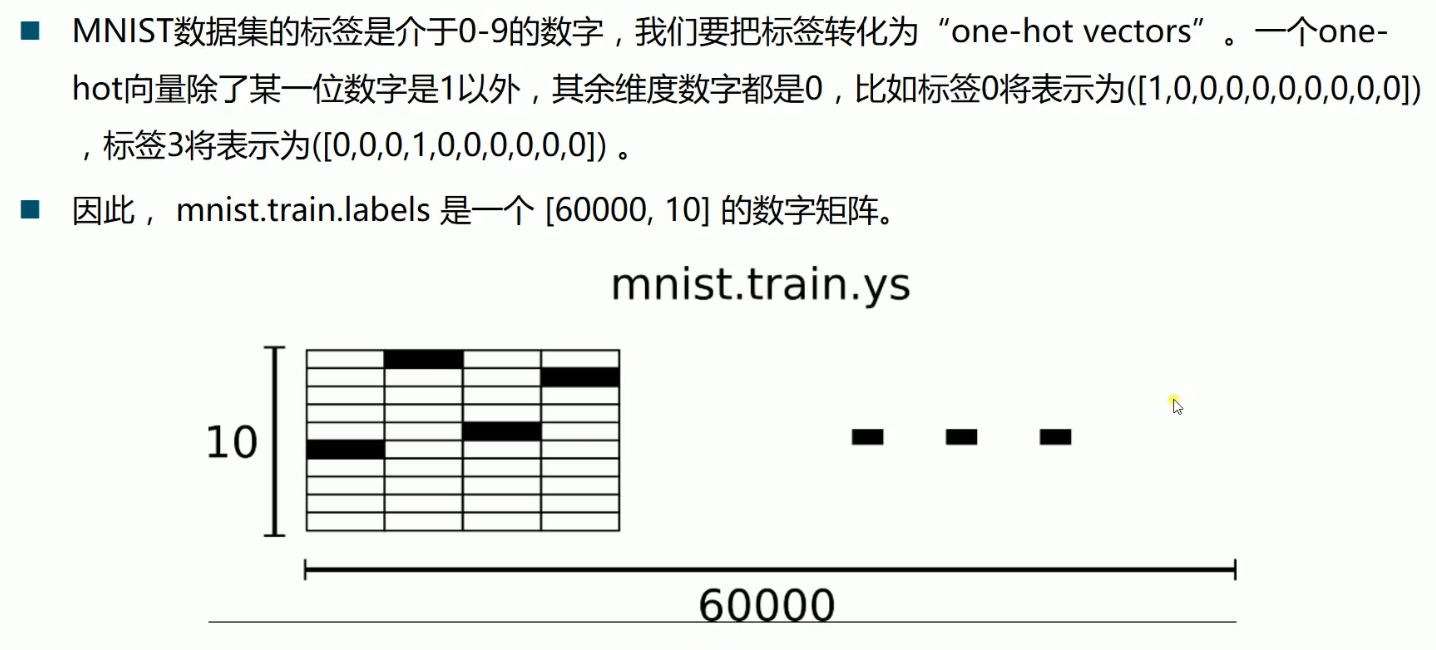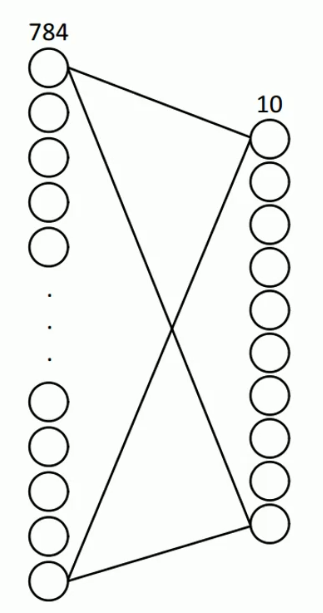003-2-TensorFlow识别手写数字数据集MNIST(简单版本)



构建神经网络:

import tensorflow as tf
from tensorflow.examples.tutorials.mnist import input_data
#载入数据
mnist = input_data.read_data_sets("MNIST_data",one_hot = True)
#定义每个批次的大小
batch_size = 100
#计算一共有多少个批次
n_batch = mnist.train.num_examples//batch_size
#定义2个placeholder
x = tf.placeholder(tf.float32,[None,784])
y = tf.placeholder(tf.float32,[None,10])
#创建一个简单的神经网络:
W = tf.Variable(tf.zeros([784,10]))
b = tf.Variable(tf.zeros([10]))
prediction = tf.nn.softmax(tf.matmul(x,W)+b)
#二次代价函数:
loss = tf.reduce_mean(tf.square(y-prediction))
#梯度下降
train_step = tf.train.GradientDescentOptimizer(0.2).minimize(loss)
#初始化变量
init = tf.global_variables_initializer()
#求准确率
#比较预测值最大标签位置与真实值最大标签位置是否相等
correct_prediction = tf.equal(tf.argmax(y,1),tf.argmax(prediction,1))
#求准去率
accuracy = tf.reduce_mean(tf.cast(correct_prediction,tf.float32))
with tf.Session() as sess:
sess.run(init)
for epoch in range(21):
for batch in range(n_batch):
batch_xs,batch_ys = mnist.train.next_batch(batch_size)
sess.run(train_step,feed_dict = {x:batch_xs,y:batch_ys})
acc = sess.run(accuracy,feed_dict ={x:mnist.test.images,
y:mnist.test.labels})
print("Iter"+str(epoch+1)+",Testing accuracy"+str(acc))
Extracting MNIST_data\train-images-idx3-ubyte.gz Extracting MNIST_data\train-labels-idx1-ubyte.gz Extracting MNIST_data\t10k-images-idx3-ubyte.gz Extracting MNIST_data\t10k-labels-idx1-ubyte.gz Iter1,Testing accuracy0.8296 Iter2,Testing accuracy0.8714 Iter3,Testing accuracy0.8817 Iter4,Testing accuracy0.8878 Iter5,Testing accuracy0.894 Iter6,Testing accuracy0.8967 Iter7,Testing accuracy0.9 Iter8,Testing accuracy0.9016 Iter9,Testing accuracy0.9038 Iter10,Testing accuracy0.9051 Iter11,Testing accuracy0.9063 Iter12,Testing accuracy0.9071 Iter13,Testing accuracy0.9091 Iter14,Testing accuracy0.9092 Iter15,Testing accuracy0.9098 Iter16,Testing accuracy0.9107 Iter17,Testing accuracy0.9117 Iter18,Testing accuracy0.9122 Iter19,Testing accuracy0.9126 Iter20,Testing accuracy0.9136 Iter21,Testing accuracy0.9139





